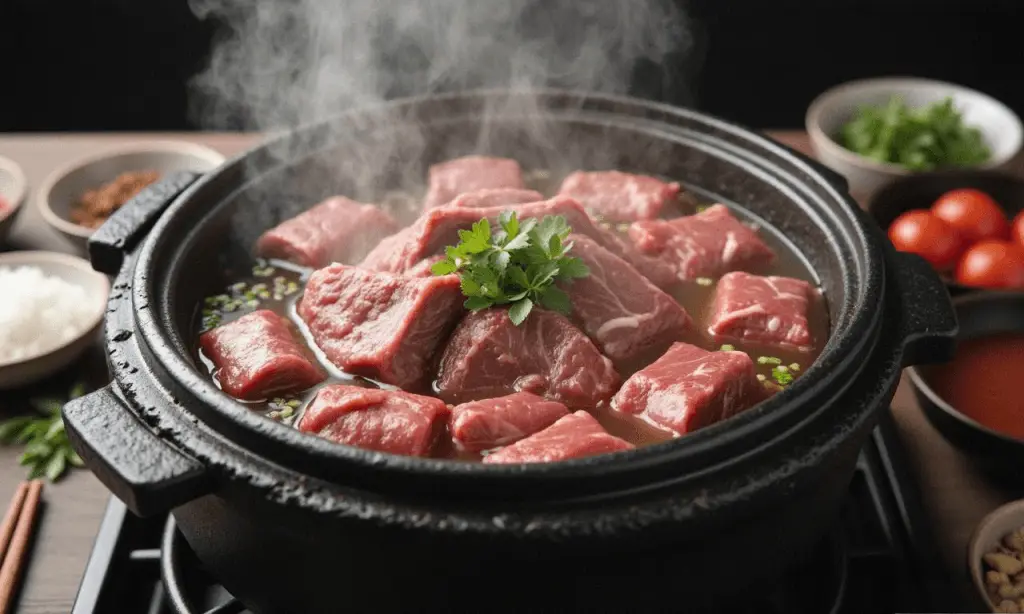Step-by-Step Guide to Vietnamese Pho
Vietnamese pho is one of the most beloved noodle soups in the world, known for its rich, aromatic broth and fresh ingredients. Originating from Vietnam, pho is a comforting and flavorful dish consisting of rice noodles, tender meat, and fragrant herbs, all served in a deeply seasoned broth. While pho may seem complex, making it at home is entirely possible with the right ingredients and techniques. This guide will walk you through each step of preparing authentic Vietnamese pho.

1. Understanding Pho and Its Variations
Pho comes in different varieties, with the two most common being pho bo (beef pho) and pho ga (chicken pho).
- Pho Bo (Beef Pho): Traditionally made with beef bones, brisket, or thinly sliced beef. The broth is rich and simmered for hours with star anise, cinnamon, and other warm spices.
- Pho Ga (Chicken Pho): A lighter version of pho, made with a clear and fragrant chicken broth. It is prepared more quickly than beef pho but still offers a comforting taste.
Regardless of the type, the key to good pho lies in the broth, which must be well-balanced and aromatic.
2. Ingredients for Authentic Pho
To make traditional beef pho at home, you will need:
For the broth:
- 2 kg beef bones (marrow or knuckle bones)
- 1 onion, halved
- 1 piece of ginger (about 5 cm), sliced
- 2 star anise
- 1 cinnamon stick
- 4 cloves
- 1 cardamom pod
- 1 tablespoon coriander seeds
- 1 tablespoon fish sauce
- 1 tablespoon sugar
- Salt to taste
- 4 liters of water
For the toppings and noodles:
- 500g beef (eye round, brisket, or flank steak), thinly sliced
- 500g rice noodles (banh pho)
- Fresh bean sprouts
- Thai basil
- Cilantro
- Green onions, chopped
- Sliced red chili
- Lime wedges
- Hoisin sauce and sriracha (optional)
3. Preparing the Broth
- Blanch the Bones: Place the beef bones in a large pot and cover with water. Bring to a boil for 5 minutes, then drain and rinse the bones to remove impurities. This ensures a clear broth.
- Roast the Aromatics: Char the onion and ginger over an open flame or in a dry pan until slightly blackened. This enhances the flavor of the broth.
- Simmer the Broth: In a clean pot, add the bones, roasted onion, ginger, and 4 liters of water. Bring to a gentle boil, then reduce to low heat. Skim off any foam or impurities that rise to the surface.
- Add Spices and Seasonings: Toast the star anise, cinnamon, cloves, cardamom, and coriander seeds in a dry pan until fragrant. Place them in a spice bag or directly into the broth. Add fish sauce, sugar, and salt. Let the broth simmer for at least 6 hours for deep flavor.
- Strain the Broth: After simmering, strain the broth through a fine sieve to remove bones and spices. Keep the broth hot until serving.
4. Preparing the Noodles and Meat
- Cook the Noodles: Soak the rice noodles in warm water for 30 minutes, then cook them in boiling water for 30 seconds or until tender. Drain and set aside.
- Prepare the Meat: For rare beef pho, thinly slice the beef against the grain. If using brisket or flank, simmer the meat in the broth until tender, then slice it thinly.
5. Assembling the Pho
- Place cooked noodles in a serving bowl.
- Arrange raw beef slices on top (if using raw beef).
- Ladle hot broth over the noodles and meat. The heat of the broth will cook the thinly sliced beef instantly.
- Add toppings: Garnish with green onions, cilantro, and Thai basil. Serve with bean sprouts, lime wedges, and sliced chili on the side.
- Customize to taste: Add hoisin sauce, sriracha, or extra fish sauce if desired.

6. Tips for the Best Pho
- Use high-quality bones for the broth. Beef marrow bones or knuckle bones create the best flavor.
- Simmer the broth for at least 6 hours for a deep, rich taste. For the best results, simmer overnight.
- Skim off excess fat and foam to keep the broth clear and not overly greasy.
- Adjust seasoning as needed. Add more fish sauce, sugar, or salt to balance the flavors.
- Use fresh herbs and toppings. Thai basil, cilantro, and bean sprouts add freshness and contrast to the rich broth.
7. Enjoying Your Homemade Pho
Making pho from scratch is a rewarding experience, allowing you to control the quality and flavor of the dish. While it takes time to prepare, the result is a comforting and delicious bowl of noodles that rivals restaurant-quality pho. Whether you prefer the deep flavors of pho bo or the light, fragrant taste of pho ga, homemade pho is a dish worth mastering.
Ethan
|
2025.04.14




